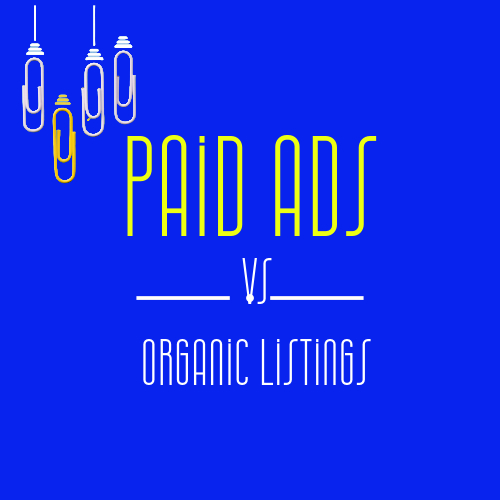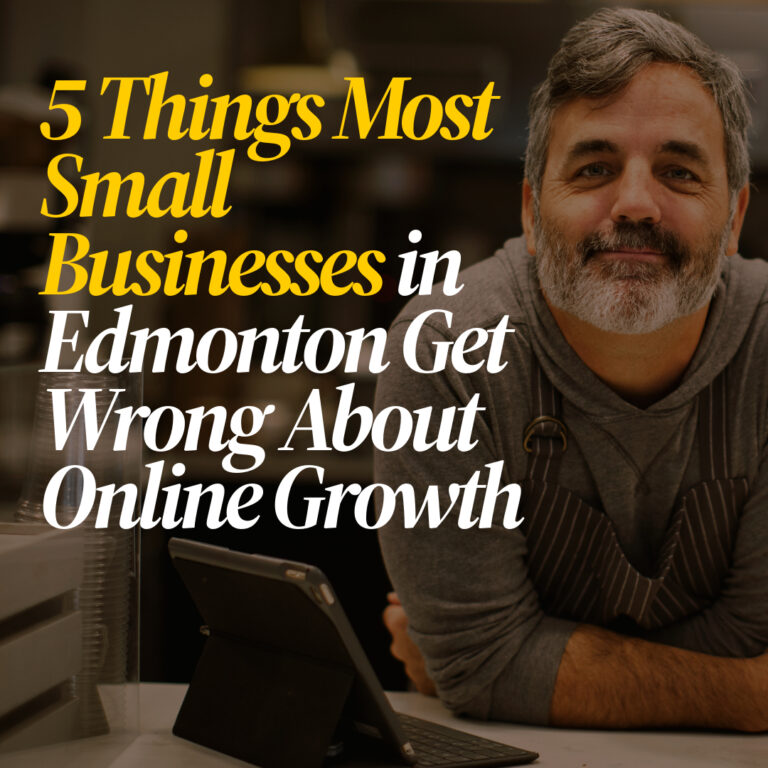How Google Treats Paid Results vs Organic Listings

How Google Treats Paid Results vs Organic Listings
The definitive guide for modern business owners who want clarity—not complexity—on SEO and Google Ads.
1. Setting the Stage: Two Paths, One Goal—Visibility
When you search on Google, what do you see first?
- Paid Ads (PPC): Often labeled with “Sponsored” or “Ad,” these results appear at the top and bottom of the search engine results page (SERP).
- Organic Listings (SEO): These are the non-paid results ranked by Google’s algorithm based on relevance, content quality, site authority, and user behavior.
At a glance:
| Feature | Paid Ads (PPC) | Organic Listings (SEO) |
|---|---|---|
| Placement | Top, bottom, sometimes in map pack | Below ads, often middle of page |
| Visibility timeline | Instant (once campaign is approved) | Long-term (weeks to months) |
| Cost | Pay-per-click | Time, content, and optimization |
| Trust Factor | Lower (users know it’s an ad) | Higher (seen as unbiased) |
| Control over appearance | High (ad extensions, copy) | Medium (title/meta tags + schema) |
| Click-through intent | High for transactional searches | High for informational/research |
Remember this
Many small business owners spend months tweaking a DIY website, hoping traffic will magically appear—only to realize no one is finding them on Google. Or they throw money at paid ads, see a spike in clicks, but no conversions—leaving them wondering where the budget went.
2. How Google Distinguishes Between Paid and Organic—Technically & Philosophically
Google’s public position is clear:
“Search advertising should be clearly labeled and set apart from unpaid results.” – Google Ads Policy Guidelines
Technically:
- Ads go through a bidding system. Google Ads uses an auction where placement is based on bid + ad quality.
- SEO is algorithm-driven. Rankings depend on 200+ signals including backlinks, mobile usability, site speed, and helpful content.
Philosophically:
- Ads fuel Google’s business. 80%+ of Alphabet’s revenue comes from advertising. This makes PPC a profit center.
- Organic search maintains Google’s trust. If Google fails to deliver accurate, high-quality results organically, users will look elsewhere.
Translation for business owners: Google promotes paid ads to monetize visibility but must uphold the quality of organic results to retain user loyalty.
And don’t forget this too
Business owners often assume paying for ads will also “boost” their SEO rankings. When that doesn’t happen, frustration sets in, and confidence in digital marketing erodes. Others get stuck in a loop: stop SEO because it’s slow, switch to Ads, drain their budget fast, then stop everything entirely—losing online momentum.
3. Why Understanding the Difference Between SEO and Paid Ads Matters for Your Business
If you treat SEO and Paid Ads (Google Ads/PPC) like interchangeable tools, you’re not just playing a guessing game—you’re likely misallocating budget, underperforming your potential, and missing out on strategic growth that your competitors are capitalizing on.
Let’s Address the Questions Business Owners Are Actually Asking
3a. “Why is my SEO traffic lower even though I’m running Google Ads?”
My Short Answer: Because Google doesn’t reward your organic rankings just because you’re spending money on Ads.
My Expanded Answer:
Google separates its search algorithms (organic results) from its ads auction system. Just because your ad shows up first doesn’t mean your website is optimized, relevant, or trustworthy in Google’s eyes for organic ranking.
In fact:
- If your site loads slowly…
- If your content is thin, generic, or outdated…
- If your technical SEO is broken…
…Google’s search crawler doesn’t care how much you’re spending on ads. Your organic visibility will remain weak.
What you’re seeing is the illusion of visibility—not real ranking power.
3b. “Do Paid Ads boost my organic rankings?”
- No. And Google has said so repeatedly.
Here’s a direct quote from Google’s documentation:
“Running paid advertising does not directly influence your search rankings.“
Let’s unpack this:
- Ads may increase brand awareness, which could lead to more branded searches or backlinks—but those are indirect effects, not guarantees.
- Organic rankings are earned through relevance, quality, trust, speed, structure, and authority—not money.
SEO is earned. PPC is rented. Don’t confuse the two.
3c. “Should I stop SEO if I’m paying for Ads?”
Absolutely not—unless you want to stay on the ad treadmill forever.
Here’s what happens when you stop SEO:
- Your site stops growing in relevance.
- Competitors who keep investing in SEO will outrank you eventually.
- You’re left fully dependent on ads, where CPC (Cost-Per-Click) keeps rising, and conversion rates fluctuate.
On the other hand, if you only run ads and ignore SEO:
- You’re missing the compound ROI that SEO delivers over time.
- You’re ignoring Google’s stated preference for useful, fast, relevant content—which is how they rank sites in search.
You’re not building an asset—you’re just renting exposure.
4. Real Consequences of Not Understanding the Difference
Let’s be blunt. Here’s what we see every week:
- A business spends $2,000/month on ads with a 1% conversion rate… and no idea why.
- Their SEO is an afterthought—no schema, no optimized copy, no backlinks—so they rank on page 5.
- They burn through budget, panic, and pause everything—leaving their brand invisible on Google.
Meanwhile:
- Their competitor is ranking top 3 organically…
- Spending half the budget…
- And pulling in leads while they sleep.
Why This Knowledge Is Power
Understanding the fundamental differences between SEO and Paid Ads:
- Helps you allocate budget wisely
- Guides your marketing timeline expectations
- Allows you to build a hybrid strategy that fuels both short-term results and long-term authority
The businesses that win in 2025 aren’t choosing between SEO or Ads. They’re using each for what it’s best at, with intent and precision.
5. How Google Treats Paid vs Organic—In Real Life Scenarios
Paid Ads: How They Work in the Wild
- Appear for competitive, high-intent keywords like “emergency plumber near me.”
- Google rewards high CTR and relevance with lower CPCs.
- Great for time-sensitive promotions, product launches, and geo-targeted campaigns.
Pro Tip: Google’s machine learning adjusts your ad visibility in real time based on budget, quality score, and competition.
Organic Listings: How Google Evaluates Content
- Focused on E-E-A-T: Experience, Expertise, Authoritativeness, Trustworthiness.
- Signals like dwell time, bounce rate, and internal linking structure impact rank.
- Core Web Vitals (loading speed, interactivity, visual stability) are now key ranking factors.
Pro Tip: Your content doesn’t just need to be good—it needs to be the best answer to a user’s query.
Imagine this:
You launch an ad, get 100 clicks, and not a single sale. Turns out your landing page was slow, poorly written, or didn’t match search intent—but you had no idea. You publish great content but see no traffic for months. You wonder, “Did I do something wrong?”—without realizing SEO takes compounding effort and Google doesn’t trust new sites overnight.
6. What Google Doesn’t Explicitly Tell You—but You Need to Know
Paid Ads Do NOT Boost Your SEO Rankings
Google has confirmed repeatedly:
“Participation in Google Ads does not affect your organic search ranking.” – Google Search Central
That said…
Running PPC + SEO together can create a halo effect.
- Users may see your brand in an ad, then trust your organic result later.
- Keyword data from PPC can inform content strategy for SEO.
Dont forget this
Some entrepreneurs are shocked when they pause a PPC campaign and traffic disappears overnight. They didn’t realize ads are rented visibility—when the budget stops, so does the traffic. Others invest heavily in SEO but ignore user experience—slow site, bad mobile layout, unclear messaging—then blame Google when rankings stall.
7. When to Use SEO, PPC, or Both: A Practical Framework
Use SEO when:
- You need long-term visibility.
- You’re building thought leadership.
- You’re targeting low-to-mid funnel traffic.
- Your budget is tight but you can invest time.
Use Paid Ads when:
- You need leads or sales now.
- You’re testing product-market fit.
- You’re running seasonal or event-based promotions.
- You have budget for testing and optimization.
Use Both when:
- You want SERP dominance (occupy both ad + organic spots).
- You’re launching a new service but want to build organic over time.
- You’re targeting the same keyword in different funnel stages.
8. What to Do Before You Launch Google Ads
- Set up conversion tracking (GA4 + Tag Manager)
- Build dedicated landing pages—not your homepage
- Clarify your daily/monthly ad spend limit
- Define your conversion goals (calls, form fills, purchases)
- Research competitors’ ad copy using tools like SEMrush or SpyFu
- Use Google’s Keyword Planner to forecast ROI
9. What to Do Before You Commit to SEO
- Run a technical audit (screaming frog or detective SEO)
- Identify content gaps using keyword research tools
- Optimize for mobile and Core Web Vitals
- Build an internal linking strategy
- Craft authoritative, unique content
- Get listed on relevant local directories (especially for service businesses in Canada)
10. Actionable Takeaways: Think Strategically, Not Separately
- Don’t treat SEO and PPC like enemies. They work best in tandem.
- Start with your business goal, not your tactic. Want immediate traffic? Go PPC. Want long-term stability? Invest in SEO.
- Trust is earned, not bought. Ads bring visibility. SEO builds credibility.
Want help deciding between SEO and PPC?
If you’re a small business owner in Canada trying to navigate where to start, let’s build a dual-channel strategy that makes sense for your goals, budget, and market.


